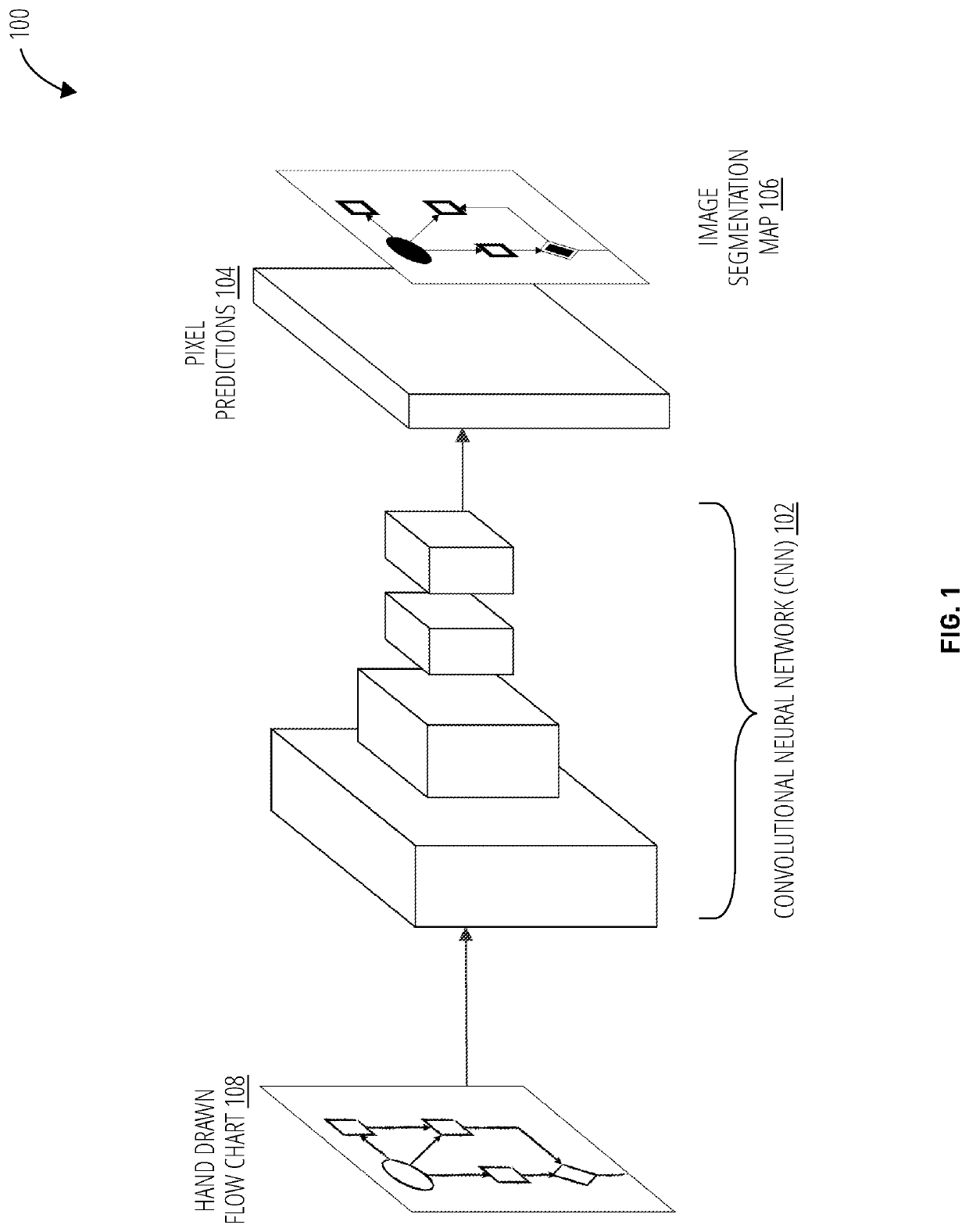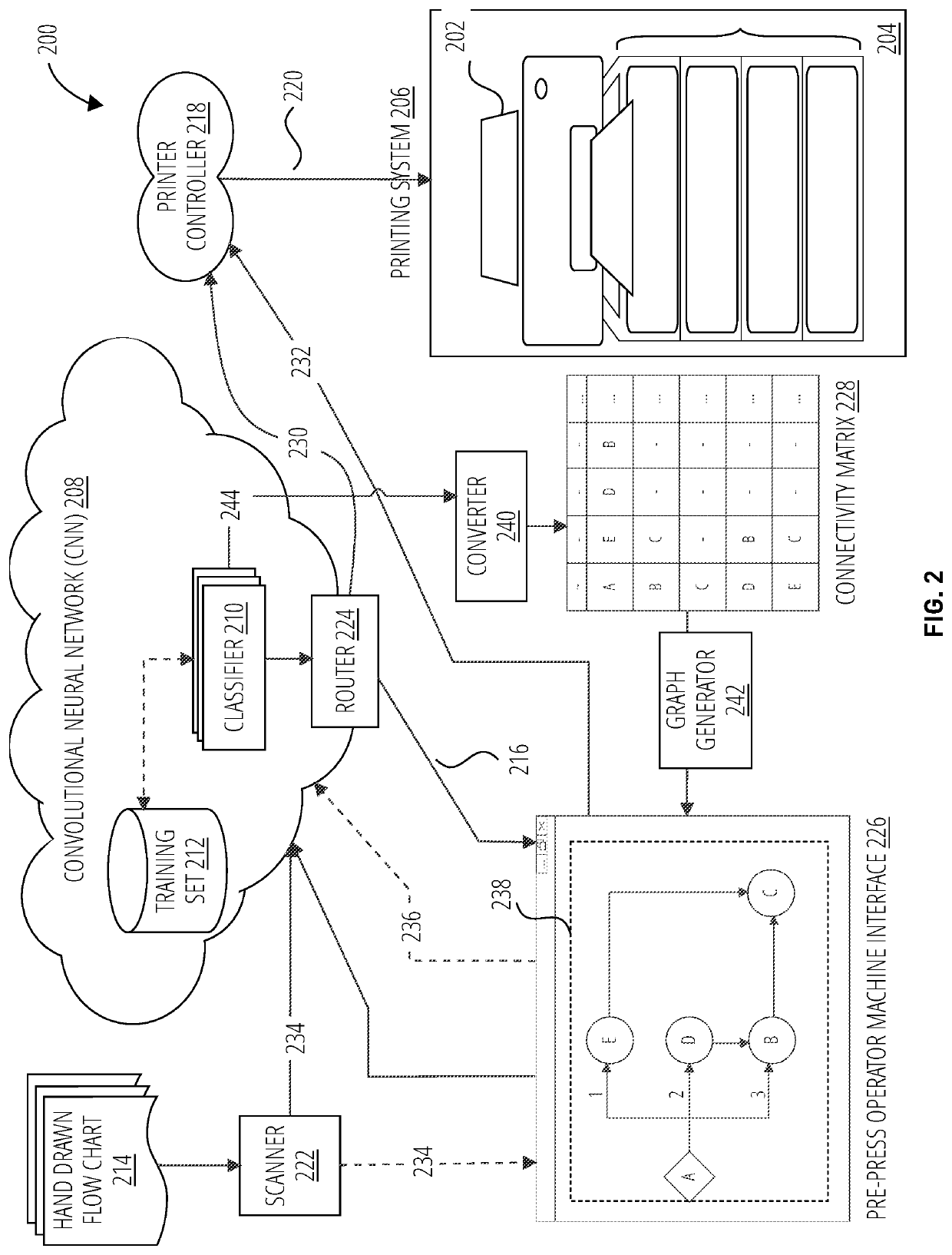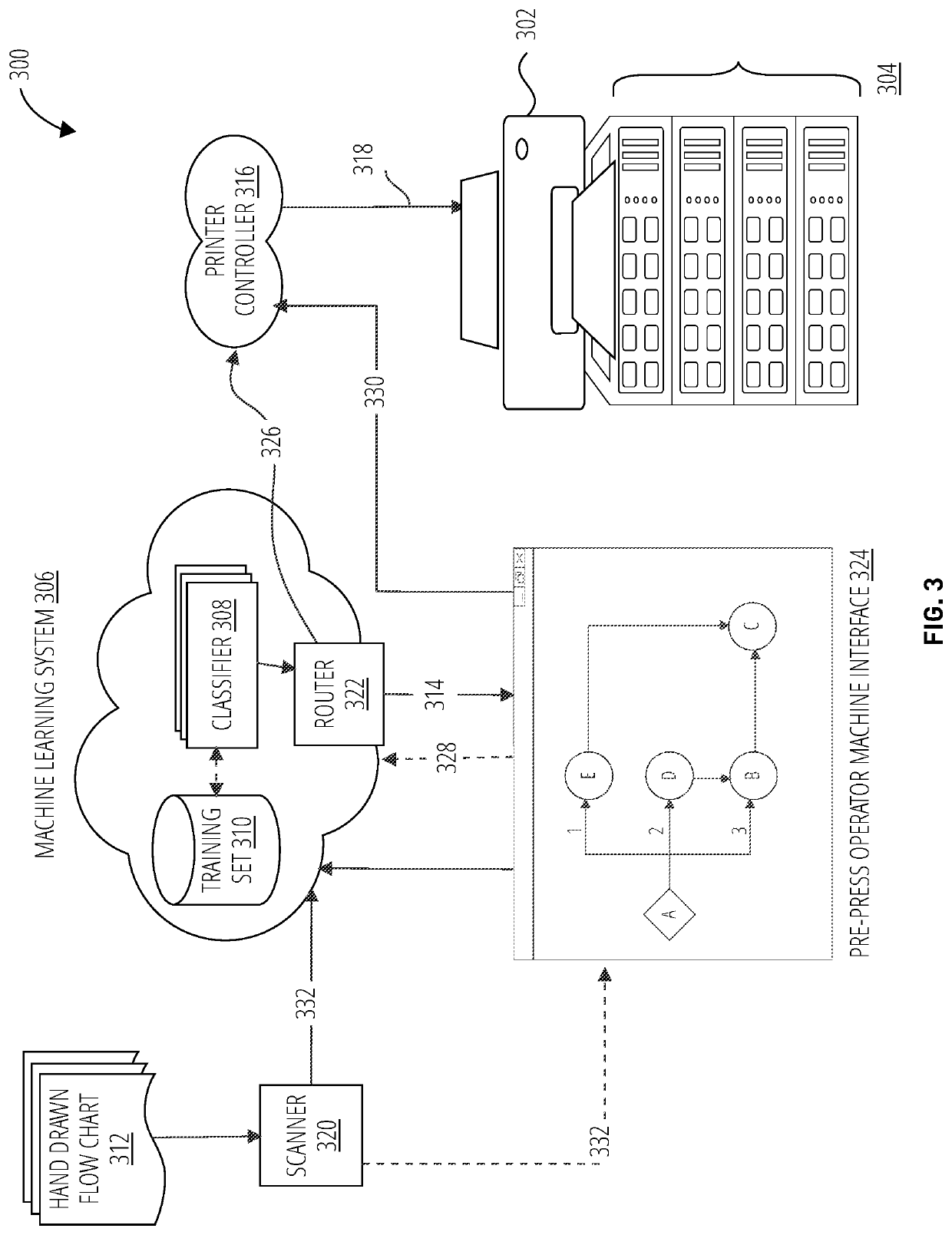Rapid workflow design using machine learning
a workflow design and machine learning technology, applied in the field of graphs and workflow diagrams, can solve problems such as cumbersome use of systems
- Summary
- Abstract
- Description
- Claims
- Application Information
AI Technical Summary
Benefits of technology
Problems solved by technology
Method used
Image
Examples
Embodiment Construction
[0016]“Action” refers to a procedure or activity that may be performed before, during, or after a process. An action may be an automated action, semi-automatic action, or an action requiring operator input, but is not limited thereto.
[0017]“Actions requiring operator input” refers to Process flow actions that require input from an operator.
[0018]“Automated actions” refers to Process flow actions that do not require operator input.
[0019]“Connectivity matrix” refers to a matrix that represents a feature map in a table format. Objects that are part of the feature map may be represented by nodes in a flow chart or workflow diagram. Nodes may include start nodes, action nodes, or decision nodes. The connectivity matrix shows the nodes and connections between the nodes in a table format.
[0020]“Connector” refers to a line in a process flow that connects actions, processes, or decisions.
[0021]“Control commands” refers to commands used to control a printing system while the printing system i...
PUM
 Login to View More
Login to View More Abstract
Description
Claims
Application Information
 Login to View More
Login to View More - R&D
- Intellectual Property
- Life Sciences
- Materials
- Tech Scout
- Unparalleled Data Quality
- Higher Quality Content
- 60% Fewer Hallucinations
Browse by: Latest US Patents, China's latest patents, Technical Efficacy Thesaurus, Application Domain, Technology Topic, Popular Technical Reports.
© 2025 PatSnap. All rights reserved.Legal|Privacy policy|Modern Slavery Act Transparency Statement|Sitemap|About US| Contact US: help@patsnap.com



